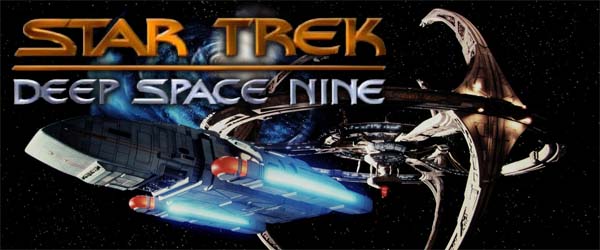
In the age of streaming and binge-watching here in the year 2023, long-form serialized television is now ubiquitous. Every network and streaming service has wanted its own blockbuster TV shows. Whether it's AMC's The Walking Dead and Breaking Bad, HBO's Game of Thrones, Sci-Fi's Battlestar Galactica, Netflix's House of Cards and Stranger Things, History's Vikings, and so forth, it seems that every big new show outside of sit-coms has a heavily-serialized format. Procedural dramas are going the way of the dinosaur.
Serialized, long-form television may be commonplace now, but back in the 1990's, it was virtually unheard of outside of daytime soap operas (such as Dallas and Dynasty) and the occasional network mini-series. At least, this was the case in the United States. British television has a much longer track record of serialized story-telling. A big part of why serialized television was uncommon was that the producer(s) of network syndicacted shows didn't have as much control over when its affiliates decided to air the shows, or how heavily they would market and advertise it. Furthermore, the networks or affiliates could change the time slot of the show pretty much at a whim. Viewership, therefore, would be much more fickle and fractured. Audiences would pop in and drop out. Expecting the audience to have seen every previous episode in preparation for this week's episode was a dangerous and risky expectation for a production studio. It's easy to lose viewers if none of them know what's going on.
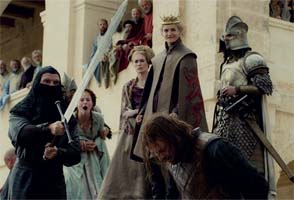 - Game Of Thrones, copyright HBO
- Game Of Thrones, copyright HBO
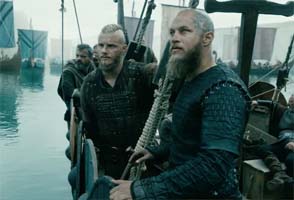 - Vikings, copyright History Channel
- Vikings, copyright History Channel
Highly serialized, long-form drama are the norm for modern networks and subscription television services.
As I mentioned in the previous essay, this was the case with me. I was in elementary school and middle school during DS9's run, and I missed a lot of episodes in the first couple seasons, despite wanting to watch the show. Missing so many episodes meant that I had very little idea what was going on when I would watch, and so I mostly lost interest in the show. If my dad was watching it, and I was there, I'd watch it, but I wasn't planning my day around it.
Looking back now, that sort of serialized story-telling is now ubiquitous and expected, and so it's easier to recognize that Deep Space Nine was truly innovative and ahead of its time in this regard.
Long-form story-telling
Serialized story-telling wasn't alien to Star Trek. Deep Space Nine premiered in 1993, the same year as the sixth season of Next Generation. By this time, The Next Generation had several story threads that had recurred over the course of a season, or over multiple seasons -- as well as several attempted overarching plot threads that were dropped.
As early as the first season of Next Generation, Q had become a recurring antagonist, and his "judgement" over the human race was established as a recurring plot thread. Heck Q's judgement of humanity was originally depicted as the framing mechanism for the entire show! It was scaled back in the following seasons due to the general poor reception of the first season, and the fact that John de Lancie just works better in a more whimsical and comic role.
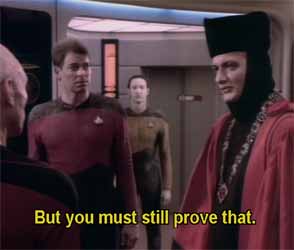 - TNG "Encounter At Farpoint", season 1, episode 1
- TNG "Encounter At Farpoint", season 1, episode 1
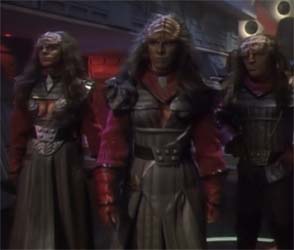 - TNG "Redemption, Part I", season 4, episode 26
- TNG "Redemption, Part I", season 4, episode 26
TNG had several recurring plot threads.
The final two episodes of Next Generation's first season, "Conspiracy" and "The Neutral Zone", seem to have been part of an abandoned attempt at more long-form story-telling. Both seem to be trying to establish some new threat to the Federation (and possibly a shared threat between the Federation and other rival powers such as the Romulans). I think the original idea was for this to become an overarching storyline for the entire series. But the thread from "Conspiracy" was completely dropped, and the destroyed colonies referenced in "The Neutral Zone" were re-written to be retroactive foreshadowing of the Borg's appearance in season 2.
[More]
cddb26c9-ca5a-4327-b199-d0d00dec522b|0|.0
Tags:Star Trek, Star Trek: Deep Space Nine, Federation, Starfleet, progressivism, humanism, secularism, religion, fundamentalism, fascism, terrorism, war, trans-gender, Worf, Odo, Quark, Moogie, Ishka, Bajor, Dominion, Founder, Changeling, Jem'Hadar, Cardassian, streaming television, Game of Thrones, Battlestar Galactica, the X-Files, Babylon 5, Buffy the Vampire Slayer, The Sopranos, Lost, Twin Peaks
I'll be honest. I almost didn't even bother to watch the third season of Star Trek: Picard. The first 2 seasons were so bad that the thought of watching another season almost made me physically ill. It was bad enough to have beloved characters like Picard, Seven of Nine, Hugh, and Q treated the way that they were, but now season 3 threatened to treat the entire cast of Next Generation with the same level of disrespect. It was not something that I wanted to willingly subject myself to.
Even after I saw some positive reactions to the first couple episodes, I still didn't bother watching. After all, the first episode or 2 of both of the previous seasons received generally positive reviews before nose-diving off the deep end into a pool of shit. But then the season reached the halfway mark, and I was still seeing almost entirely positive buzz surrounding it -- and not just from a few shill social media influencers, but from pretty much everybody. At that point, my partner started expressing interest in watching it, so I finally caved and started watching, with a bottle of Excedrin next to me, just in case.
I kept my guard up throughout the first few episode. I fully expected that it would start off relatively strong before inevitably tripping over its own 2 feet. But that kind of ... never really happens this time around. Yes, there is a big "mystery box" tease throughout the show that had the hallmarks of J.J. Abrams and Alex Kurtzman plastered all over it, and that had me very worried for where things would end up. And yes, that mystery box does turn out to be an 11th-hour bait-and-switch.
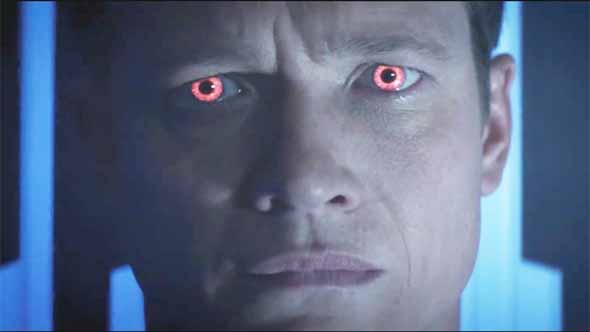 © CBS, Paramount
© CBS, Paramount
The "Mystery Box" of Jack Crusher had Alex Kurtzman's fingerprints all over it.
But even though the bait-and-switch plot-twist ends up being about as silly as anything that was in the previous 2 seasons, this one actually kind of works. It's something that is actually quite clearly telegraphed throughout the entire show, starting from the opening scenes. But it also has some clever mis-direction and red-herrings to keep the twist from ever feeling truly certain. And instead of being something pulled out of the writers' asses (like robot tentacle-monsters from another dimension), this twist is something that is both firmly grounded in Star Trek history and lore, and which logically follows from previous series.
It's almost like the people who wrote this season of Picard actually, like, I don't know, watched some episodes of Star Trek before coming up with this plot.
It ends up making a world of difference. I'm still not "in love" with Star Trek: Picard season 3. I don't think it is particularly great "Star Trek". It still falls firmly into the category of "Dark Trek", and is still about vengeful bad guys with super-weapons. But it is at least competently-plotted and scripted this time around. It is tightly themed, is loaded with set-ups and pay-offs, and shows our characters growing an changing in ways that are consistent with their original characterizations. Season 3 of Picard is basically an extended Next Generation movie, and it's definitely better than Nemesis, and probably at least as good as any of the other Next Generation movies (keeping in mind that I'm not a big fan of First Contact). [More]
|

| 12 | | | | | | | 60 | | 11 | | | | | | | 55 | | 10 | | | | | | | 50 | | 09 | | | | | | | 45 | | 08 | | | | | | | 40 | | 07 | | | | | | | 35 | | 06 | | | | | | | 30 | | 05 | | | | | | | 25 | | 04 | | | | | | | 20 | | 03 | | | | | | | 15 | | 02 | | | | | | | 10 | | 01 | | | | | | | 05 |
|